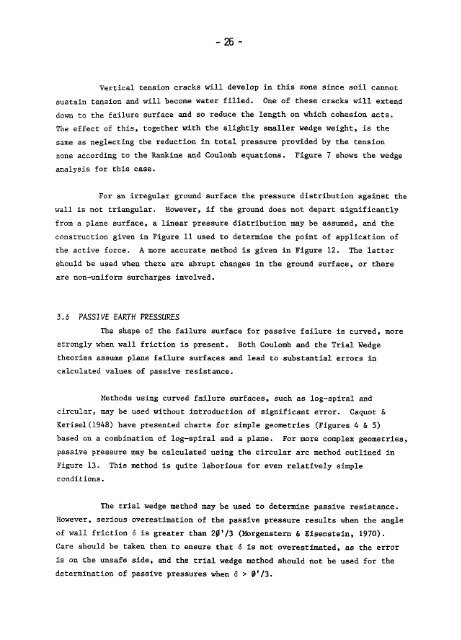4 - HKU Libraries
4 - HKU Libraries
4 - HKU Libraries
You also want an ePaper? Increase the reach of your titles
YUMPU automatically turns print PDFs into web optimized ePapers that Google loves.
-26 -Vertical tension cracks will develop in this zone since soil cannotsustain tension and will become water filled- One of these cracks will extenddown to the failure surface and so reduce the length on which cohesion acts,The effect of this s together with the slightly smaller wedge weight, is thesame as neglecting the reduction in total pressure provided by the tensionzone according to the Rankine and Coulomb equations. Figure 7 shows the wedgeanalysis for this case.For an irregular ground surface the pressure distribution against thewall is not triangular. However* if the ground does not depart significantlyfrom a plane surface 9 a linear pressure distribution may be assumed, and theconstruction given in Figure 11 used to determine the point of application ofthe active force, A more accurate method is given in Figure 12. The lattershould be used when there are abrupt changes in the ground surf ace, or thereare non-uniform surcharges involved.3.6 PASSIVE EARTH PRESSURESThe shape of the failure surface for passive failure is curved, morestrongly when wall friction is present. Both Coulomb and the Trial Wedgetheories assume plane failure surfaces and lead to substantial errors incalculated values of passive resistance.Methods using curved failure surfaces, such as log-spiral andcircular* may be used without introduction of significant error. Caquot &Kerisel(1948) have presented charts for simple geometries (Figures 4 & 5)based on a combination of log-spiral and a plane. For more complex geometries,passive pressure may be calculated using the circular arc method outlined inFigure 13. This method is quite laborious for even relatively simpleconditions.The trial wedge method may be used to determine passive resistance.However,, serious overestimation of the passive pressure results when the angleof wall friction 6 is greater than 20 f /3 (Morgenstern & Eisenstein* 1970),Care should be taken then to ensure that 6 is not overestimated* as the erroris on the unsafe side, and the trial wedge method should not be used for thedetermination of passive pressures when 6 > 0'/3.

















